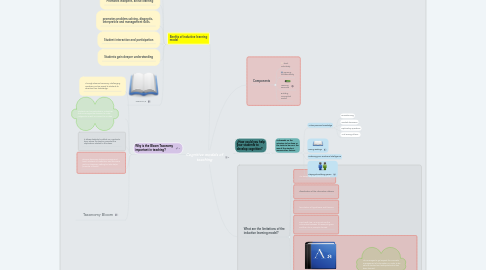Cognitive models of teaching
by LISBETH JAZMIN HINOJOSA ACOSTA


1. Benfits of inductive learning model
1.1. the students are more engaged in the teaching learning process
1.2. Promotes indepent, active learning
1.3. promotes problem-solving, diagnotic, interpretive and management skills.
1.4. Student interaction and participation
1.5. Students gain deeper understanding
1.6. INDUCTIVE
2. Why is the Bloom Taxonomy important in teaching?
2.1. Through Bloom’s taxonomy, challenging questions can be posed to students to ascertain their knowledge.
2.2. Students can be motivated in a direction that encourages the decision to make judgments as well as commit to an idea.
2.3. It allows students to reflect on a particular topic where the teacher provides the implications related to the ideas.
2.4. Bloom’s taxonomy helps encourage and teach students to make their own decisions just in a classroom setting but also helps promote a life skill.
2.5. Taxonomy Bloom
3. ¿How could you help your students to develop cognition?
3.1. It depends on the activities to be done or the tasks to be sent, the age of the student, among other factors.
3.1.1. Active previous knowledge
3.1.1.1. Brainstorming
3.1.1.2. Guided discussion
3.1.1.3. Exploratory questions
3.1.1.4. And among others...
3.1.2. Doing readings
3.1.3. Fostering your emotional intelligence
3.1.4. Playing stimulating games
4. Components
4.1. Think Inductively
4.2. Inquiring Collaboratively
4.3. Learning resources
4.4. Building Conceptual control
5. What are the limitations of the inductive learning model?
5.1. It is based on observation and facts
5.2. dlassification of the information obtaine
5.3. formulation of hypotheses and theories
5.4. Pupils with low I.Q may not see the connection between the example given and the rule or principle formed.
5.5. The application of the Basic Inductive Method begins with the students' daily knowledge. From these, the data provided by the teacher can be grouped and categorized, after which hypotheses and inductions are generated
5.5.1. This manages to go beyond the concrete management of information, in order to be able to abstract and extrapolate what has been learned.
